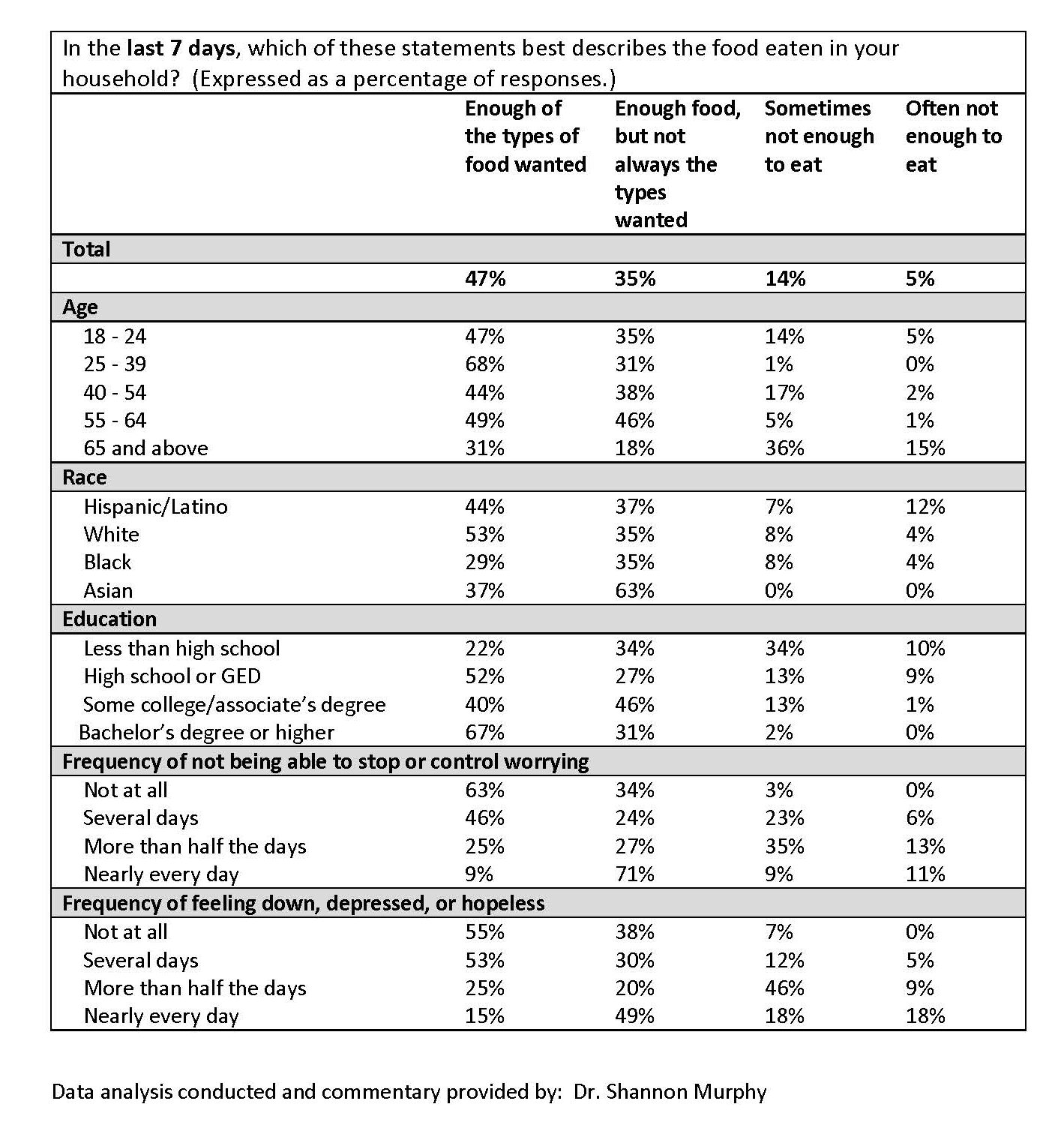
How the COVID-19 Pandemic is Affecting Food Insecurity in Alabama Households with Children
- June 30th, 2020
In response to the unprecedented circumstances presented by the COVID-19 pandemic, the U.S. Census Bureau has launched a new survey to meet the urgent need for timely data measuring how the pandemic is impacting households from a social and economic perspective. The Household Pulse Survey includes questions on how jobs, finances, access to food, health, housing, and education have been affected by the pandemic. The analysis below focuses on how the pandemic is affecting food insecurity (a measure of whether or not the people in the home have enough to eat in the last seven days) in Alabama households with children based on the latest published survey data covering the week of June 11-16.
Overall, the news is good in that most (82%) Alabama homes with children report having enough food in the last seven days, if not the types they wanted. However, when respondents are broken down into demographic groups, patterns emerge where the elderly, people of color, and people with low levels of educational attainment are suffering from food insecurity and an associated strain upon their mental health.
Fifteen percent of respondents aged 65 or older with children in the home report often not having enough to eat in the last seven days, compared to 5% of 18-24 year-olds, 0% of 25-39 year-olds, 2% of 40-54 year-olds, and 1% of 55-64 year-olds. (Note that while it may seem odd that a respondent aged 65+ would have children in the home, in 2018 the Annie E. Casey Foundation reported 7% of Alabama’s children lived in the care of their grandparents.) Another pattern emerges when race is considered, as 12% of Hispanic households with children report often not having enough to eat in the last seven days, compared to 4% of White and Black households and 0% of Asian households. Education is also a factor in that only 22% of respondents with less than a high school education report that their household has had enough of the types of food they wanted. Meanwhile, the percentage of respondents saying their household did have enough of the types of food they wanted was much higher for respondents with a high school diploma/GED (52%), some college or an Associate’s degree (40%), or who held a Bachelor’s degree or higher (67%).
The Household Pulse Survey data also indicates the stress of food insecurity is having a negative impact upon respondents’ mental health. Those who have sometimes or often not had enough to eat in the last seven days report higher frequencies of symptoms related to anxiety or depression. For those who say they have sometimes not had enough to eat in the last seven days, 35% report feeling unable to stop or control worrying at least half the days and 46% of them report feeling down, depressed, or hopeless at least half of the days. For those who say they often have not had enough to eat in the last seven days, 11% say they are unable to stop or control worrying nearly every day and 18% report feeling down, depressed or hopeless nearly every day.
Food insecurity is just one way the COVID-19 pandemic is having an effect upon Alabama households. For more information, the full Household Pulse Survey data (to include data for each state and the U.S. as a whole) may be found at the U.S. Census Bureau’s website: https://www.census.gov/data/tables/2020/demo/hhp/hhp7.html

